

Josh Nevett
CarExpert's top five mid-size SUV reviews of 2025
10 Hours Ago
Tesla scored a smash hit with the Model 3 compact saloon. Surely an SUV version is certain for even greater success?

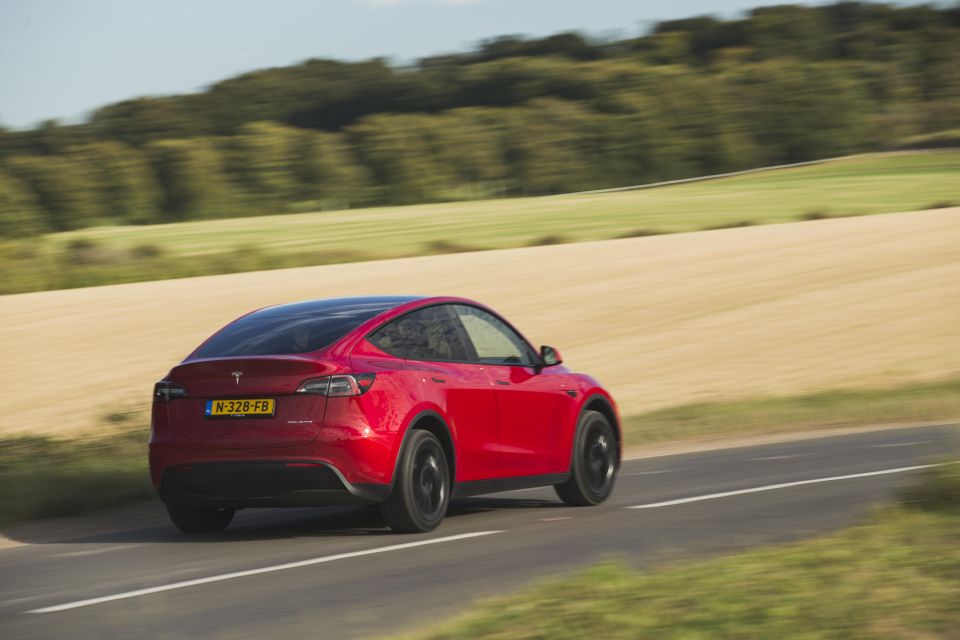

Contributor

Contributor


Contributor

Contributor
Where expert car reviews meet expert car buying – CarExpert gives you trusted advice, personalised service and real savings on your next new car.
If you know about the Tesla Model 3, you will already know quite a lot about the Model Y.
It completes Tesla’s core line-up of S, 3, X, Y models (Ford wouldn’t release the Model E name it owns) and is effectively a crossover version of the junior sedan.
It will understandably cost a few grand more, with UK prices starting at £54,990 ($101,679) and deliveries are due to commence early next year. Australian pricing is still to be announced.
It’s bigger than the Model 3 – only by 50mm in length (so it’s 4.75m long) but a full 181mm in height. Just 27mm of that goes into increasing the ground clearance to 167mm, so the body height is stretched by more than 150mm, which should do headroom a favour.
How to describe the looks? I won’t dwell too long, because you can make your own mind up, but a videographer colleague described it as looking like a generic car you would nick in the Grand Theft Auto video game that’s sort of meant to look like something else but doesn’t quite do so; or maybe one from an insurance advert where they take a real car and digitally remove its most distinguishable features.
Maybe we’re still getting used to a grille-less future. Among Tesla owners, it turns a few heads, mind.

As noted earlier, pricing for the Australian market is still to be confirmed, as is more specific launch timing.
Unlike the Model 3, the Model Y will only launch with two dual-motor variants, meaning the entry price will likely be much higher than the single-motor Model 3 Standard Range Plus ($59,990).
In the UK, the Model Y Long Range starts at £54,990 ($101,679), which is £6500 ($12,018) dearer than the equivalent Model 3 Long Range.
The Model 3 Long Range currently lists for $73,400 plus on-road costs in Australia, so expect the entry-level model Y to kick off around the $80,000 mark. Should the Model Y start in that price bracket, it’ll be markedly more affordable than similarly-sized premium-branded EVs.
Key rivals include:
All prices exclude on-road costs
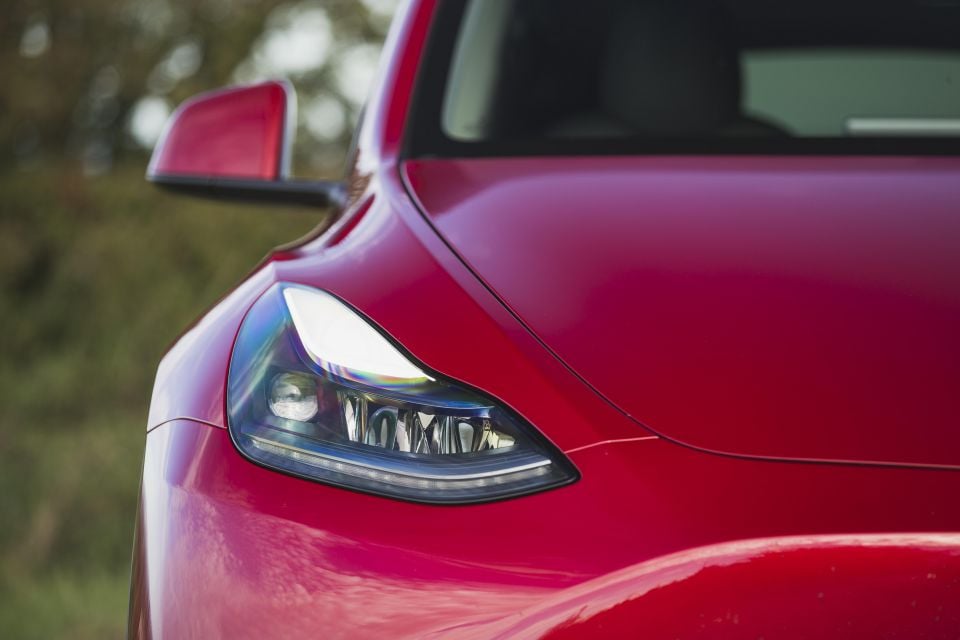
Buy your new car without the stress. It's fast, simple and completely free.

Great service from Travis and team, second time I have used this business would not hesitate to recommend them to anyone
Craig C.
Purchased a Ford Ranger in Sunshine Coast, QLD
CarExpert helped Craig save thousands on his Ford Ranger, now let us save you on your next new car.
Find a dealAustralian pricing and specifications aren’t confirmed yet, but we can use the Model 3 as a guide.
The Model 3 Long Range includes the following:
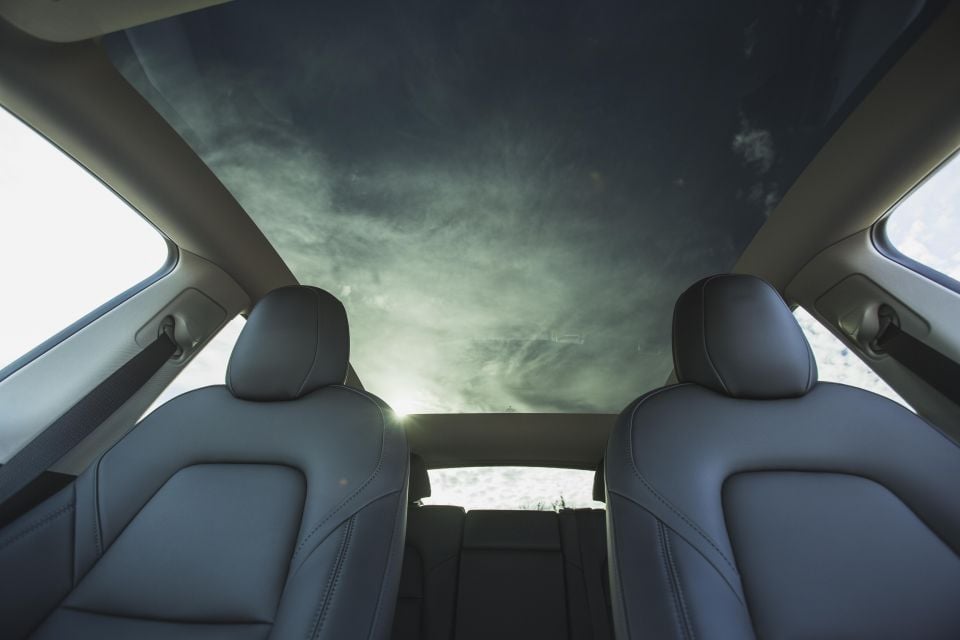
That’s on top of the Model 3 Standard Range Plus equipment list, which includes:
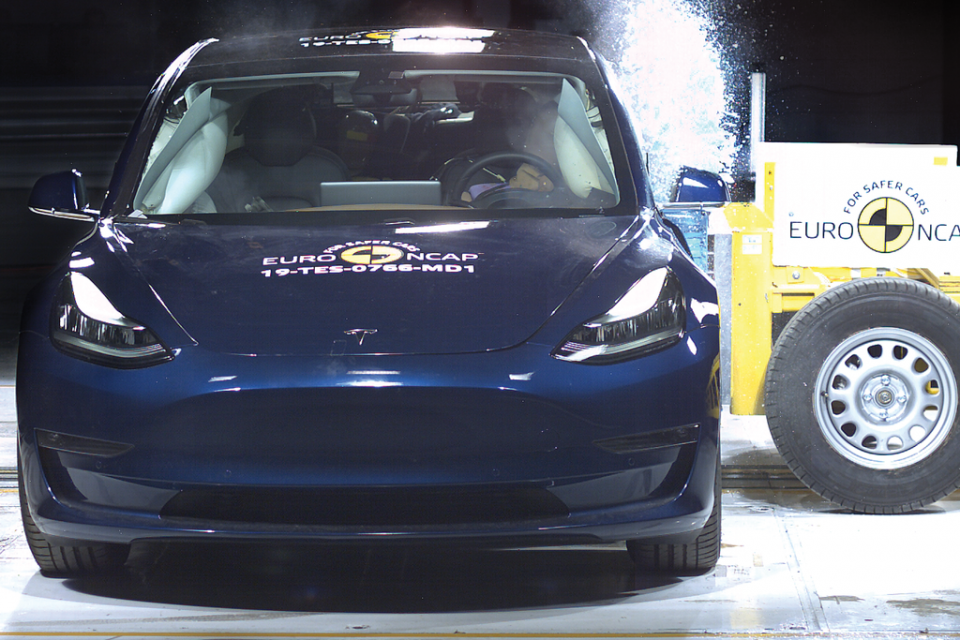
The Tesla Model Y hasn’t been tested by Euro NCAP yet, but the related Model 3 wears a five-star ANCAP and Euro NCAP safety rating based on tests conducted in 2019.
In terms of category scores, the Model 3 managed 96 per cent for adult occupant protection, 87 per cent for child occupant protection, 74 per cent for vulnerable road user protection and a record-breaking 94 per cent for safety assist.
Standard safety equipment in the Model 3 includes:
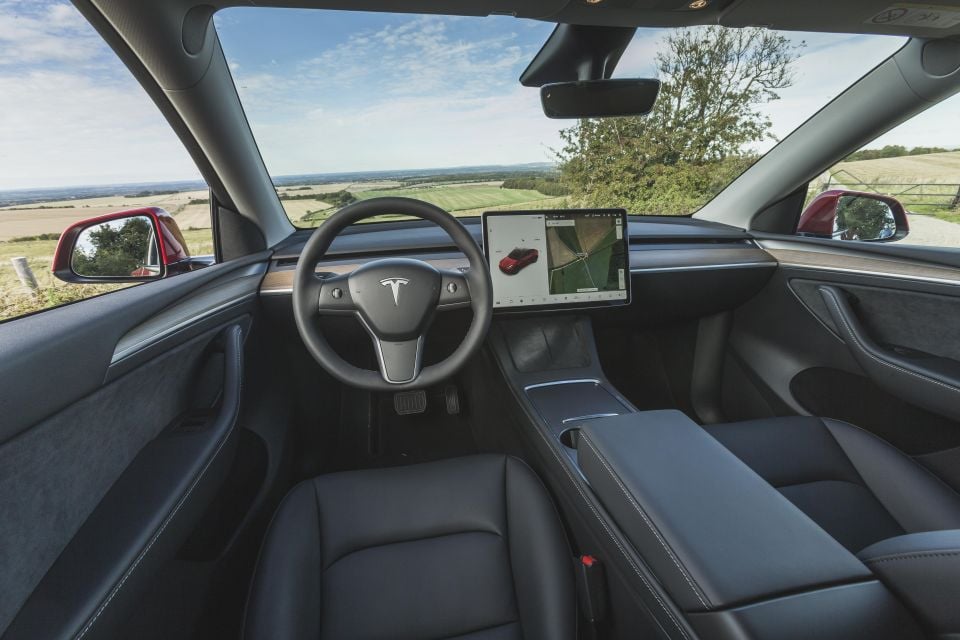
The extra body height does indeed give great headroom. There’s a huge non-opening sunroof, too, and a relatively low window line that makes for an airy cabin.
There’s a strip of light-coloured matte wood around the front of the dashboard, some brushed aluminium and the same silvered plastics as those fitted to the latest Model 3, lighter and less markable than piano-black plastic.
Critiquing the quality of the switchgear is a toughie, because there’s hardly any of it.
If the mechanicals of the Model Y will be familiar to Model 3 drivers, likewise will be its driving environment.
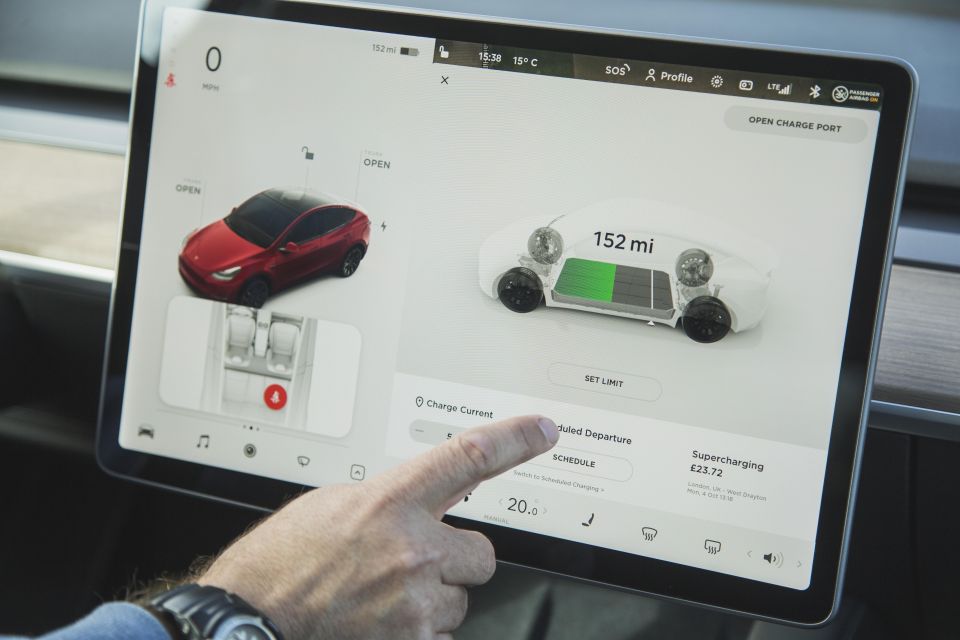
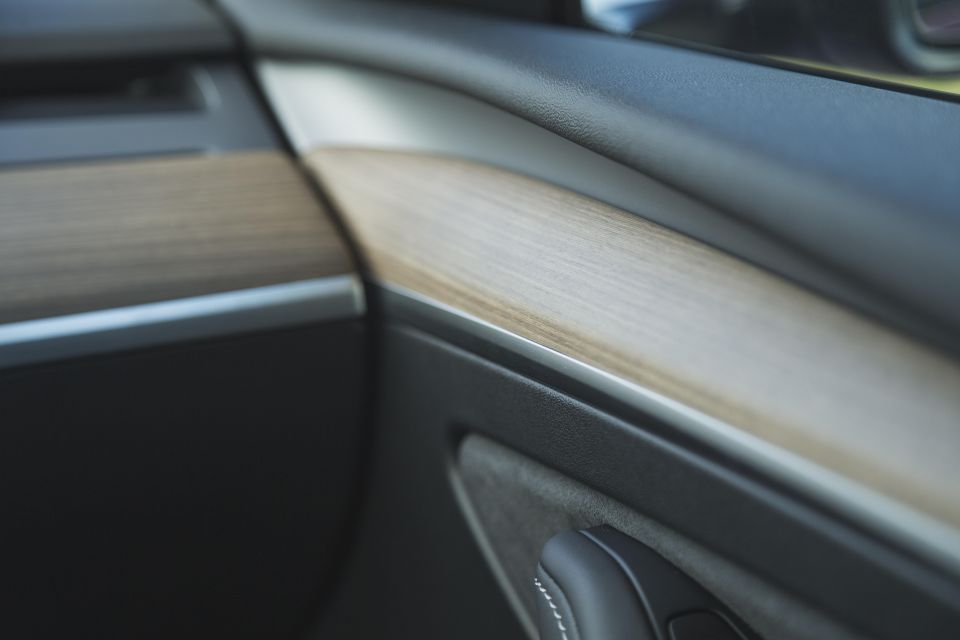
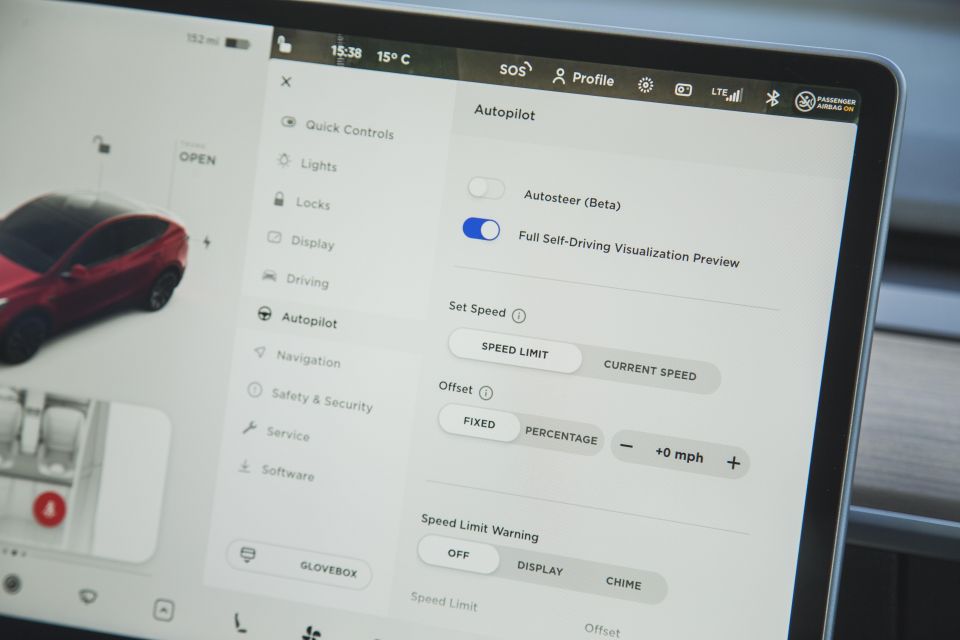
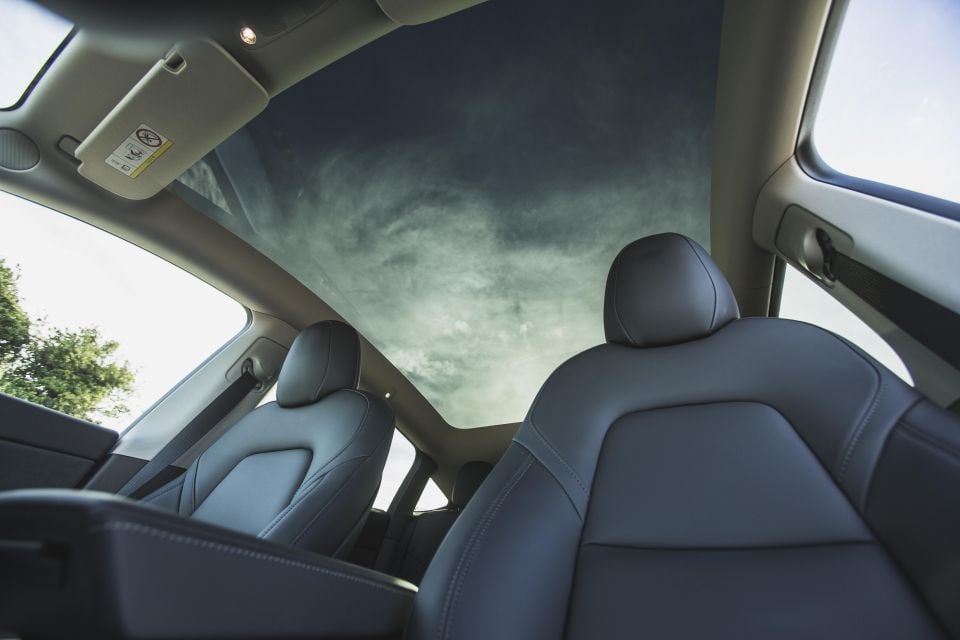
It has an exceptionally clean cabin that, apart from door switches, window switches, two column stalks and two multifunction dials on the steering wheel, has everything delegated to the 15-inch landscape-oriented touchscreen on the centre of the dashboard. From displaying the car’s speed to opening the glovebox, it’s all here.
If you think that sounds like Tesla is asking one screen to accommodate rather a lot, you would be right.
In some ways, I get the logic. Why have separate buttons to move the door mirrors or the steering wheel, given it’s something you should do before you set off? So tap a menu and then an icon on the screen and use the dials on the steering wheel to do it.
It looks cleaner, there’s less going on and it’s cheaper than fitting separate levers and buttons. But there’s a layer of complexity to some controls that wouldn’t be there if there were a button exactly where you had left it. I would particularly like a stand-alone temperature dial.
That said, no one does touchscreen functionality or presentation as well as Tesla. The resolution is great and the system is cleanly laid out and responsive. Setting the sat-nav is a doddle and the way that integrates with Tesla’s excellent Supercharger rapid-charging network is terrific.
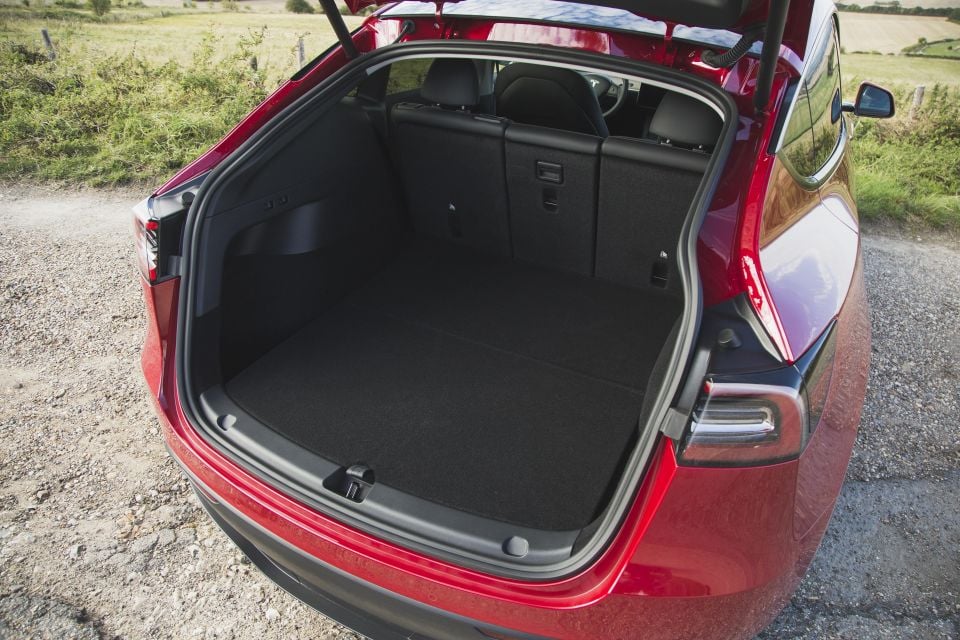
Because of the nature of its architecture, the Model Y offers a lot of luggage space.
There’s a 117-litre frunk (or froot, or just boot, or whatever) under the bonnet and an 854-litre boot at the back, with more underfloor space than in the Model 3, because the floor is higher. There’s a cubby beneath that you could use for storing the charging cables.
Fold the rear seats forward and add up oddments storage – of which there’s plenty – and you end up with 2100 litres of cargo space.
At the moment, all Model Ys for the UK are five-seaters. There’s a seven- seat option elsewhere but no word yet on when that will arrive.
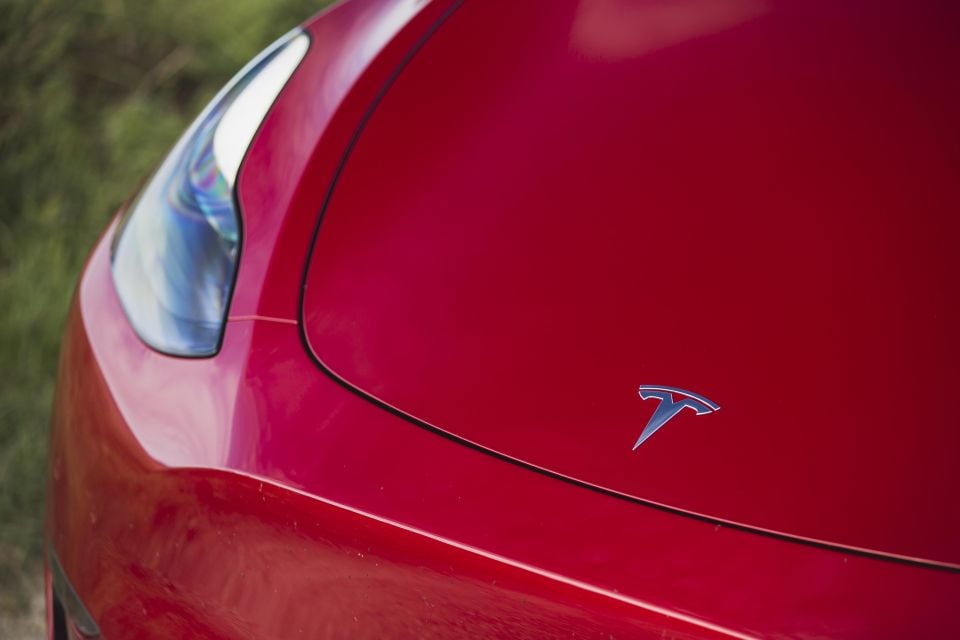
At launch, there will be two versions, both with two motors and thus four-wheel drive.
The slower model is the Long Range tested here. It has a motor on the rear axle and a less powerful motor at the front giving a combined 434bhp (323kW), which is good for a 0-100km/h time of 5.0 seconds and a top speed of 133mph (214km/h). Then there’s the Performance version with a 483bhp (360kW) total and an exceptionally whizzy 3.7-second 0-100 time.
Some people might say you don’t really need a mid-sized SUV with that kind of stomach-warping acceleration, and they would probably be right.
But the truth is that if you want to regenerate large amounts of power under deceleration (and you will, because that’s quite an efficient thing to do), you need quite a capable motor-generator to do it. So you’re basically getting the acceleration as a by-product of the regeneration capacity.

The acceleration, top speed and indeed range figures for the Model Y are all down a bit over the respective Model 3 variants, which is partly a reflection of the crossover’s increased kerb weight (2003kg) and probably even more its greater frontal area, because aerodynamics are so crucial to a car in motion.
It’s still competitively leggy, though, scoring 315 miles (507km) on the WLTP test cycle, which might even turn out to be longer at some point. Tesla doesn’t publish its battery sizes, but word is that this Model Y has around 75kWh of usable capacity out of a total of 79kWh.
It can be charged at rates of up to 250kW by a DC rapid charger and at up to 11kW by an AC one, via a plug port on the rear-left corner.
The battery pack sits low between the wheels, which are suspended by double wishbones at the front and a multi-link set-up at the rear, with coil springs and non-adaptive dampers.
Those wheels are 19 inches in diameter as standard, or you can specify your test car’s rather natty 20-inch Induction items, shod with 255/40- profile Michelin Pilot Sport EV tyres.
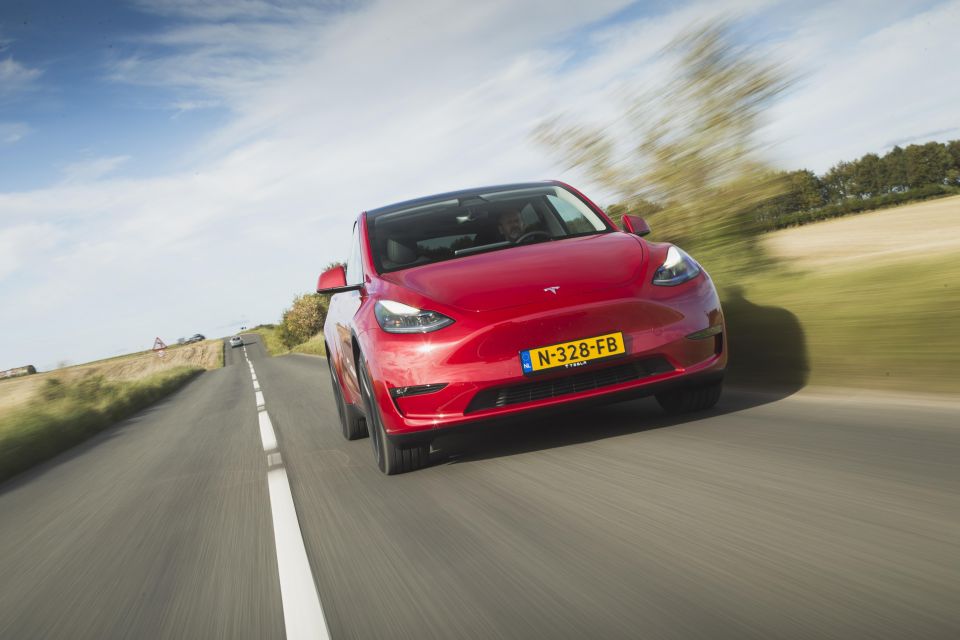
Where Tesla is still catching up is in the old-school dynamic engineering side of things.
There’s nothing wrong with the driveline, which is both smooth and linearly responsive (with varying degrees of either depending on whether you select a ‘Chill’ throttle response or a normal one). There’s a lot of deceleration on lift-off, which is fine, although I would quite like paddles to vary it.
You can select whether you would like the car to creep like an auto, roll like a manual or auto-hold when stationary, mind, which is great. And you can adjust the weighting of the steering.
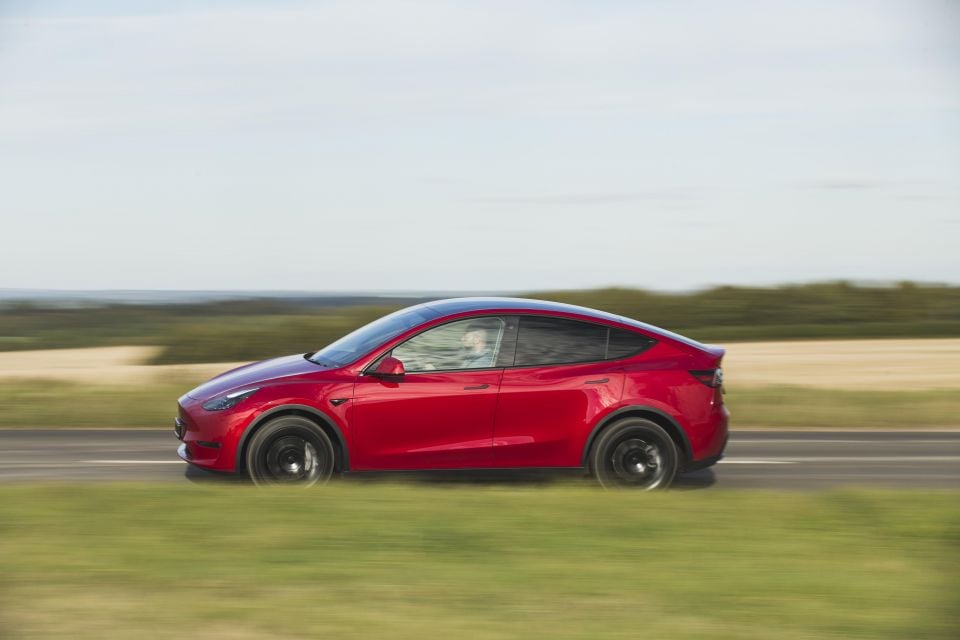
But it doesn’t ride too cleverly. I would like to try a Model Y on 19-inch rims in case that’s better, but it’s quite brittle like this. You get used to it quickly, but it never feels like there’s tremendous body rigidity and the intrusion affects the otherwise strong refinement. And I’m not convinced there’s a need for it.
A dynamics engineer explained to me recently that EV makers are still getting on top of this. Because EV bodies are heavy, the temptation at conception is to fit thick anti-roll bars to keep the body upright, which essentially means the suspension is no longer independent and the ride suffers.
But, he reckons, because EVs have an inherently low centre of gravity, you don’t need those thick bars, after all, which means each side’s suspension can breathe.
Some manufacturers do this better than others. It’s not a direct competitor to the Model Y, but the Porsche Taycan probably gets it more right than anything else.

The rest of the driving experience is good. The steering is smooth, is accurate and has a good amount of self-centring.
It doesn’t need more weight than in Comfort, the lightest of its three modes. It doesn’t give you much encouragement, but the handling is steady, and it’s churlish to ask much more of a family SUV.
All Model Ys come with Tesla’s Autopilot system, whose name I don’t like much for a pretty good adaptive cruise control system that will help out with steering too.
I like the name of the Full Self Driving Capability option (not fitted to our test car) even less. While Tesla writes in pretty large print about “fully attentive drivers” with their “hands on the wheel at all times” and we know what these things do and how they work, it’s still poor judgement to use such names.
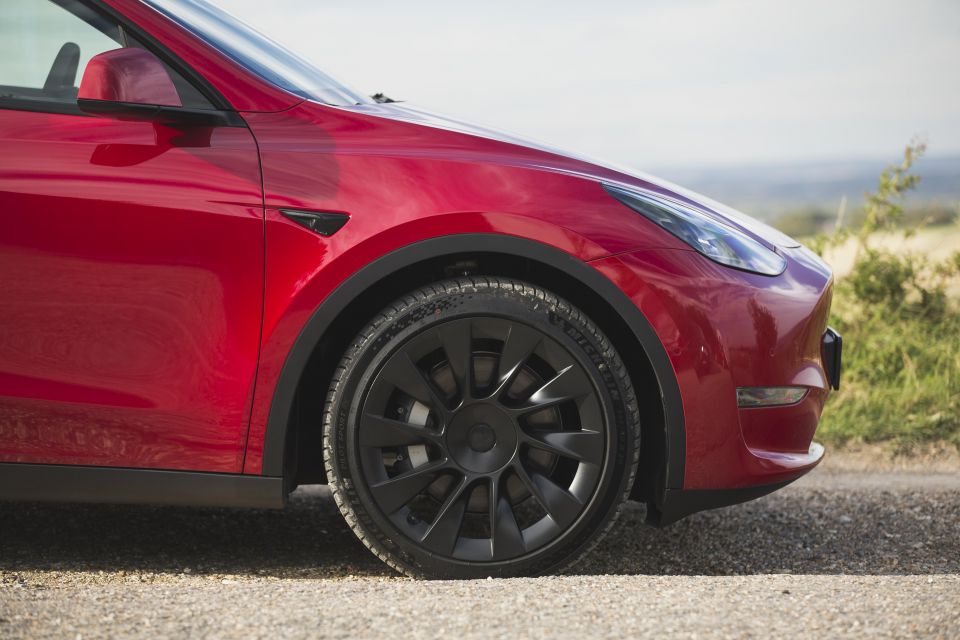
Where expert car reviews meet expert car buying – CarExpert gives you trusted advice, personalised service and real savings on your next new car.
In Australia, Tesla’s ‘Basic Vehicle Limited Warranty’ covers four years or 80,000 kilometres – whichever comes first.
The Supplemental Restraint System – or airbags and seatbelt systems – comes under a five-year, 100,000km warranty, whichever comes first.
Finally, the Battery and Drive Unit Limited Warranty is dependent on the model line and variant of your Tesla.
While the Model Y isn’t on sale locally just yet, the related Model 3 is covered as below:
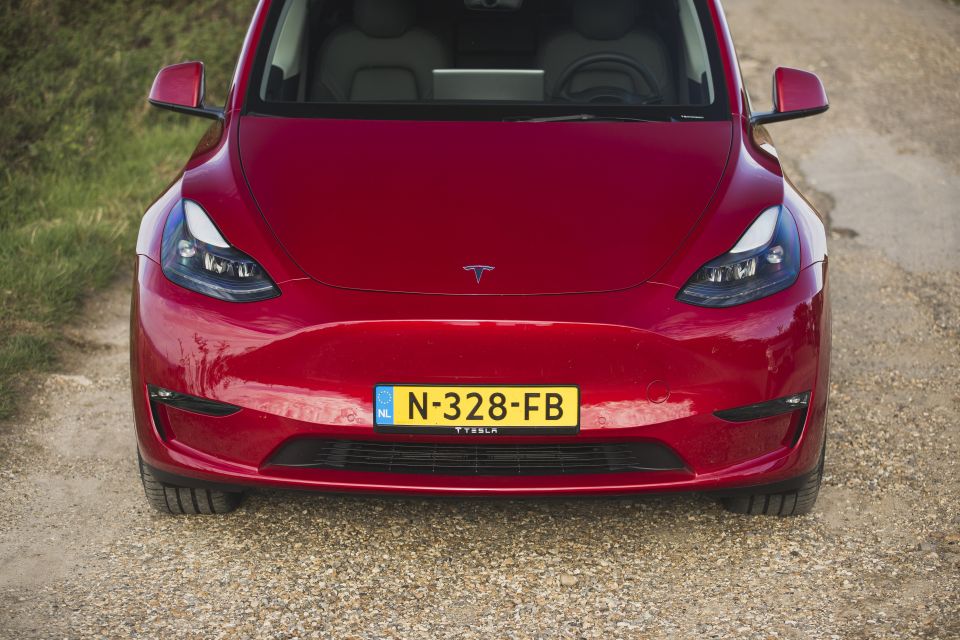
All told, this is a good car.
The competition for the Model Y is much better today than for the Model 3 when it arrived in 2018, but the establishment sometimes copies the wrong bit when trying to do what Tesla does – for example Volkswagen, of all companies, has entirely screwed up the simple concept of adjusting the temperature in the ID.3 and ID.4.
This means that, despite some dynamic shortcomings and being too touchscreen-heavy, the Model Y is comfortably towards the top of the class, and with access to a charging network that’s still second to none.
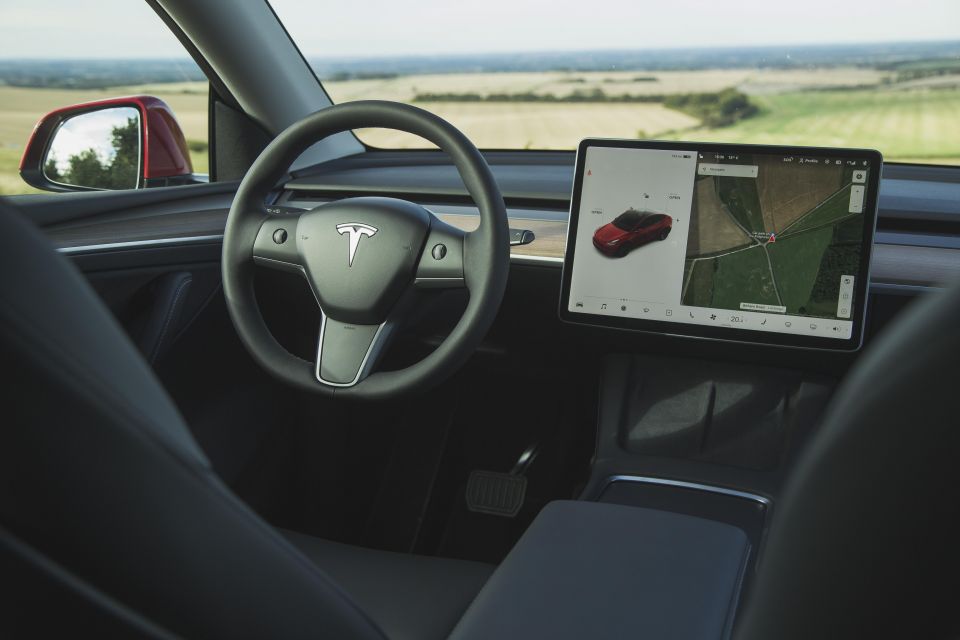
Click the images for the full gallery
MORE: Everything Tesla
Where expert car reviews meet expert car buying – CarExpert gives you trusted advice, personalised service and real savings on your next new car.


Josh Nevett
10 Hours Ago


Ben Zachariah
1 Day Ago
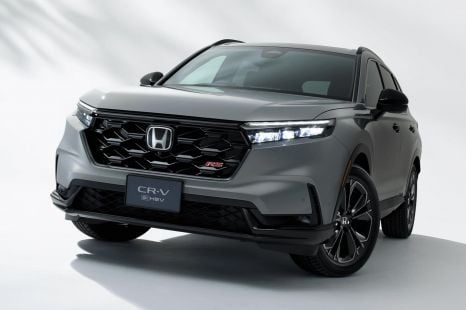

James Wong
2 Days Ago


Derek Fung
2 Days Ago


CarExpert.com.au
5 Days Ago
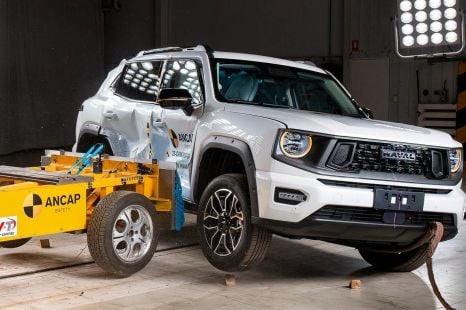

James Wong
5 Days Ago